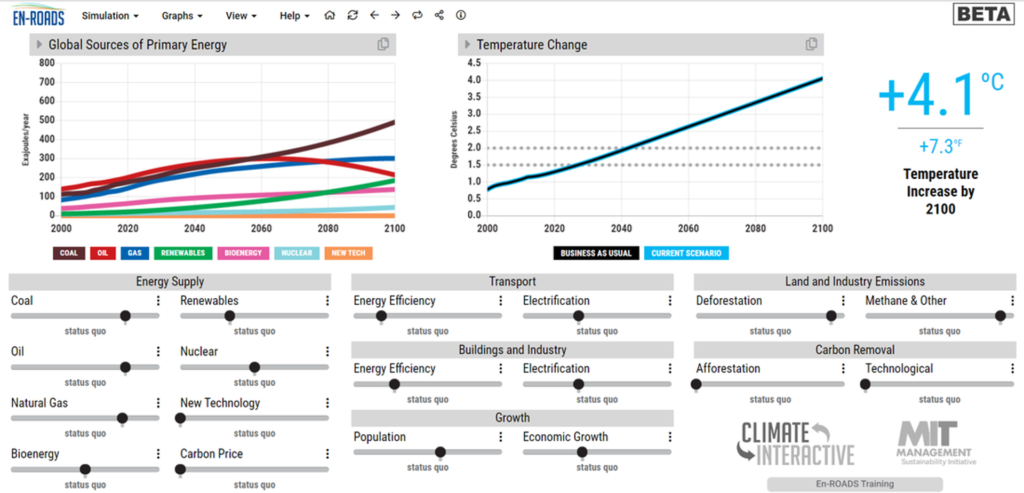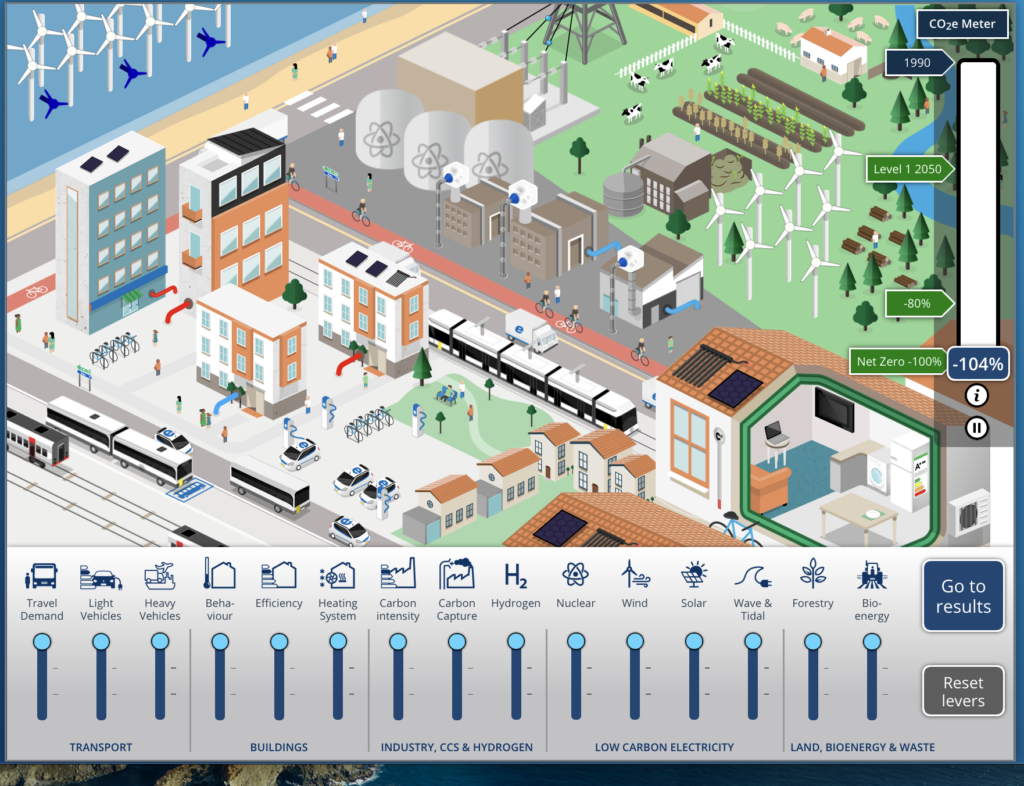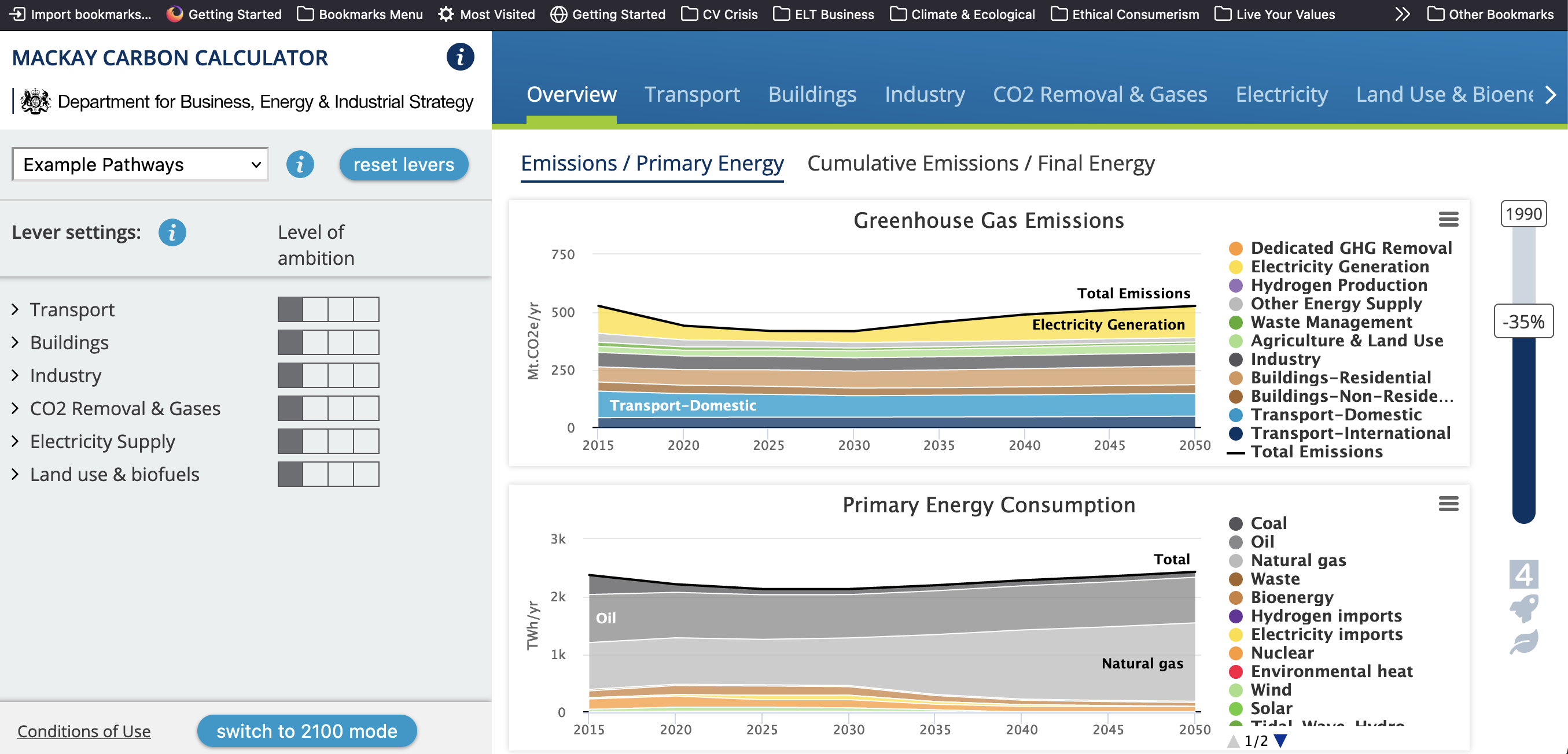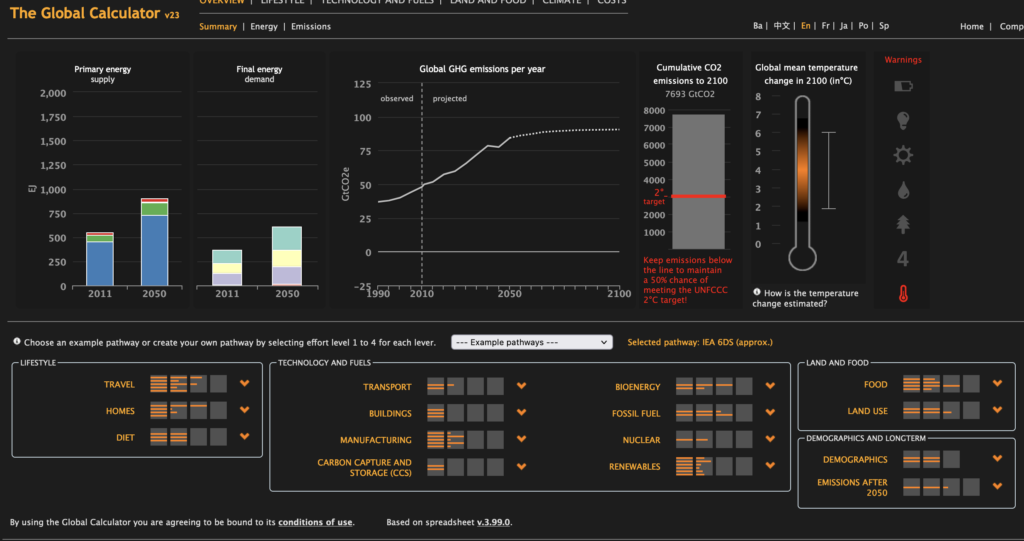There are many on-line tools and simulators that allow you to explore scenarios of the future and ‘predict’ what the world might look like in 2050 and beyond. Use the links below and take the opportunity to explore WHAT NEXT.
En-ROADS Climate Simulator from Climate Interactive

In this simulator, you can adjust subsidies and taxes, incentivise or discourage policies in six categories: Energy Supply, Transport, Buildings & Industry, Growth, Land & Industry and Carbon Removal. Each category is sub-divided into areas such as Renewables, Efficieny or Afforestation.
We use this this simulator in our Climate Action Workshops. Here are some of the scenrios developed on these workshop:
Zero Carbon Guildford Workshop, 20th September 2021
ZCG Workshop for Schools, 21st October 2021: Individual Action, Additional Action, Final Result
My 2050 from the Department of Business, Energy and Industrial Strategy (BEIS).

In this tool, you can set varying ‘levels of ambition’ for different sectors and create scenarios for achieveing net zero by 2050. There are five main categories: Transport, Buildings, Industry, CCS & Hydrogen, Low Carbon Electricity and Land, Bioenergy & Waste. These categories are then sub-divided into areas such as Light Vehicles, Building Energy Efficiency or Solar.
Mackay Carbon Calculator from the Department of Business, Energy and Industrial Strategy (BEIS).

As with My 2050, in this tool you can set varying ‘levels of ambition’ for different sectors and create scenarios for achieveing net zero by 2050 and project these to 2100. There are five main categories: Transport, Buildings, Industry, CO2 Removal & Gases, Electricity Supply and Land Use & Biofuels. These categories are then sub-divided into areas such as International Aviation, Industrial Efficiency or Nuclear.
The Global Calculator funded by the UK Government’s International Climate Fund and the EU’s Climate KIC.

In this tool you also set varying ‘levels of ambition’. There are four categoroes: Lifestyle, Technology & Fuels, Land & Food and Demographics & Long Term. These are then sub-divided into categories such as Travel, Manufacturing or Food. Each sub-category is then further sub-divided into a particualr aspect of that sub-category, for example passenger miles flown or building insulation. Interestingly, there are some pre-set scenarios, here are a few example:
The Climate Game by the Financial Times
